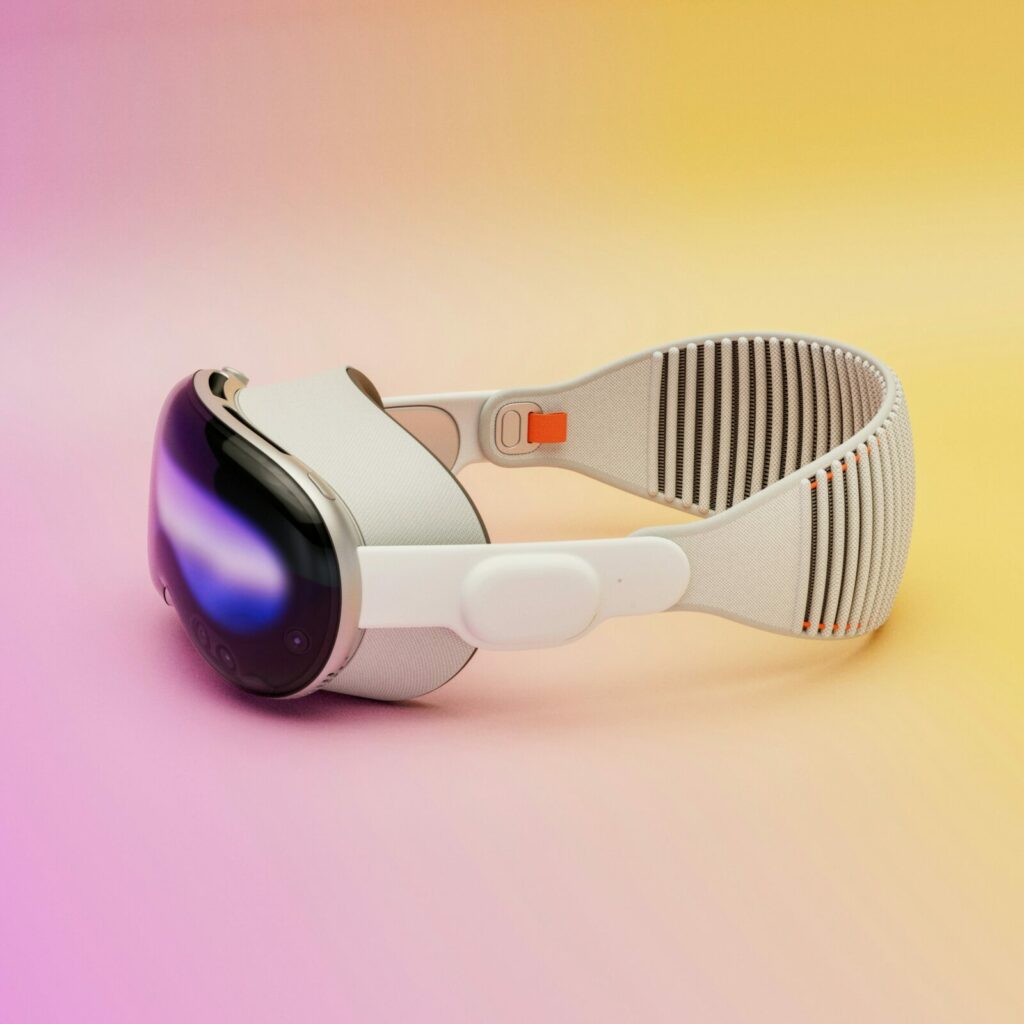
The Apple Vision Pro – Apple’s latest attempt to make your wallet thousands of pounds lighter – launches today to all the fanfare and excitement one would expect from the world’s most valuable company. The Vision Pro, Apple’s first foray into the world of extended reality (“XR”), functions similarly to a virtual reality headset, but promises to integrate seamlessly into the real world as well. Is it all hype? Or is there a viable business case to be more from this product?

The Vision Pro is, for all intents and purposes, a top-of-the-line virtual reality (“VR”) headset with extra gadgets. A pair of goggles, noticeably sleeker than the competition (though still managing to make you look like you’re about to hit the slopes), that feature a computer capable of displaying 3D environments on screens mounted in front of each eye. The headset, like other VR headsets, features an array of cameras around the device which are used to compute the space around you, as well as track certain elements on the screen.
Where the Vision Pro distinguishes itself from the competition is through its use of XR, or ‘spatial computing’ as Apple has dubbed it. Whereas conventional VR headsets have opaque screens, creating an opaque picture separate to the outside world, Vision Pro uses its exterior cameras to an real-time video of the world outside the headset through to the screens inside, as if looking through clear glasses.
XR is really what this product is all about. The user interface (“UI”), for example, appears as if hovering in the air in front of you, suspended in space. The cameras on the device allow for incredibly precise object tracking, using LiDAR scanning technology (normally used to create high-fidelity 3d scans of evironments), so elements of your workspace can be effectively ‘placed’ in the room in front of you.
For example, let’s say you’re working on a desktop computer (naturally this is only compatible with Apple devices) and composing an email. If you were wearing the Vision Pro, you would be able to use its ‘Mac Visual Display’ feature to extend your desktop beyond the bounds of its actual screen, effectively creating virtual, floating extra monitors. Say you’re composing an email but need to look something up in another window: you’d be able to launch a second virtual monitor above your laptop that you can drag to anywhere in your room, near or far, that you could use with your normal keyboard and mouse.
This example is a fairly basic use of the technology but demonstrates its basic premise: creating virtual assets that can be placed and viewed in the ‘real world’.
Sitting at a cool $3,500 price point, the Vision Pro will certainly be a hard sell to most. Apple has put a lot of effort into marketing it as an addition to many business professionals’ workflows, but does this really have grounds for widespread adoption? For instance, with the example of creating a second virtual monitor – this is already achievable with… Real monitors, which cost a fraction of the price and aren’t restricted to the Mac operating system.
Another key selling point of the device is its ‘spatial video’ capabilities – essentially filming a 360 home video in 3D, which allows users to replay the scene and watch from different viewpoints. Again, this feature requires both the video maker and watcher to own headsets, but certainly promises a novel viewing experience. Museums, interactive art displays, and other product showcasing industries will surely make good use of this technology.
Of course, as is the case with standard VR headsets, gaming holds much potential for the Vision Pro, and gamers are among the few customer bases willing to throw down exorbitant sums of money to be early adopters of new tech. What will be the worry, though, is whether the high price of entry – coupled with the slow adoption of many game developers – will fail to attract many gamers at all. Console games sell well because they have a relatively low entry point and provide a high-fidelity experience. Mobile games make stacks of cash because everyone has a phone and they offer addictive, low-commitment, cash-grab experiences. The Vision Pro sits somewhere between these two extremes, with graphics and a gameplay experience not quite as complete as that of consoles, but with a target market far smaller than that of mobile games.
There will certainly be industries the Vision will suit better than others, for example:
The Vision Pro is certainly a very promising piece of kit. It includes some of the most cutting-edge technology available in the VR/XR space, and you really do pay for what you get here. Once the app store is a bit more fleshed out and more developers start seeing it as worthwhile to pursue, it might become an easier sell to businesses. But, right now, it seems the early-adopters will be having fun in their new XR world – keep on eye on this space, it promises to be an exciting one to watch develop.
